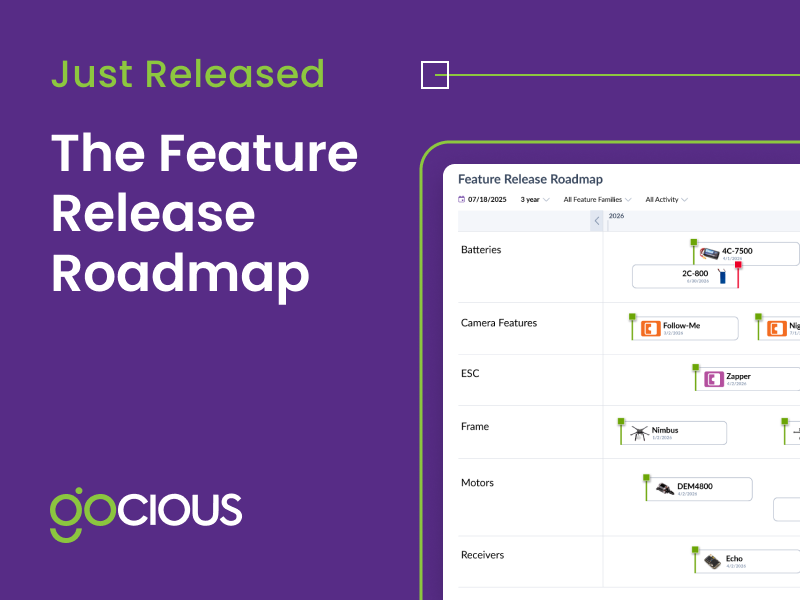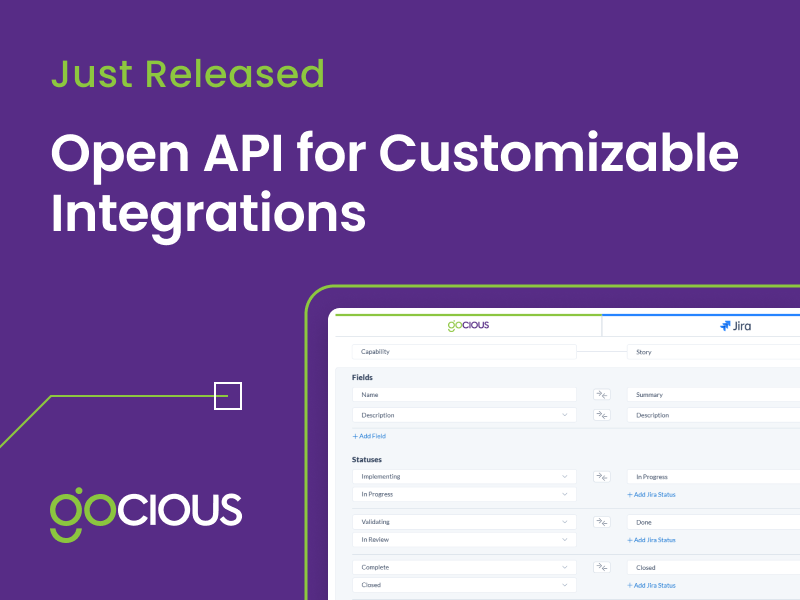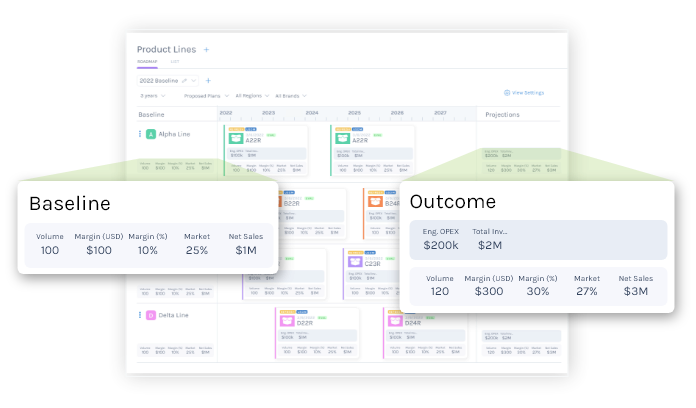
Subscribe to our blog
Ready to improve your roadmapping process?
Curious about how Gocious can help your manufacturing team transform its Product Lifecycle Management strategy? Let’s schedule a call to explore!
Product Management Articles
Maziar Adl

Recent Posts
A New Approach to Roadmapping
How to communicate product roadmaps across teams and departments with agility and clarity.
What Is the Difference Between Product Roadmaps for Physical vs. Digital Products?
Product roadmaps are not a new idea, but how we develop, follow, and manage roadmaps is changing. Every company needs to have sleek, powerful software that allows agility, oversight, and transparency for product management to stay competitive.
How Having a Product Roadmap Can Transform Your Organization
A roadmap is an essential tool that guides our actions step-by-step to a destination or goal. Maps on their own have been guiding people from place to place since at least 600BCE.
7 Tips to Keep Your Product Release Timelines On Track
Seeing a product hit the market and into customers' hands is the most rewarding part of being a product manager. Knowing that your oversight, keen decision-making, and complex work result in products that improve people's lives makes the heavy workloads and stressful weeks worthwhile.
Why Is a Product Roadmap Necessary?
Manufacturing a product from scratch takes strategic planning, purposeful timing, and effective communication across all departments, from product development and engineering to sales, marketing, and even finance.
The 7 Key Challenges to Product Roadmap Management
Every year, innovation brings new and improved products to life, making many amazing and brilliant things available to us, from advanced electronic systems to fuel-efficient or electric vehicles to AI technology, making the dangerous industries safer for humans.
5 Factors Separating the Product Management of Hardware vs. Software Products
The day-to-day experiences of product management roles have similarities between industries. There needs to be a product vision established, a development plan laid out, and a strategy to manage it all must be created.
9 Skills a Product Manager Must Have
What if you could conjure up a new car with the snap of your fingers? Or create the latest smartphone with the tap of a button? That is the kind of efficiency that people dream of, but since technology isn't quite there yet, manufacturers still rely on product managers to help bring these products to life as efficiently as possible.
5 Crucial Steps to Building a Clear Product Roadmap
Product roadmaps are a great way to keep track of your company's progress towards designing, building, and releasing new products to the market. A product roadmap creates a space where you can set goals, track performance, and make decisions for future development. When you have a plan to look over each product and product line, you'll be able to spot both the success and trouble spots with more insight and metrics to prove it. The product roadmap also provides a framework for communicating with stakeholders, investors, and marketing teams.
We've established that roadmaps are great for business, but how should a product roadmap be structured? How can a company keep track of multiple products and brands destined for various markets? We've got five simple steps you can use to build any product roadmap, along with an important tip for managing multiple product lines!
Product Management and the Need for Speed in the Digital Age
Products are becoming more complex, and understanding different market segments and personalizing products for each segment iteratively is on the rise. Providing different variations of the same platform and modules for different market segments is a way to enable personalization. But segments are shifting rapidly in the manufacturing space and keeping up with the pace of change and controlling this complexity requires new ways of working and new tools to support it.
How Gocious Goes Beyond Product Roadmap Management
Guiding a product from the drawing board to the marketplace requires a full-team effort, one in which everyone in the organization is working with the same information and aligned to the same goals. Historically, manufacturers and software development companies have coordinated this kind of product development using a product roadmap. However, while traditional product roadmap management software can be helpful, it’s also limited. Typically, product roadmap management software focuses on projects over products, meaning the emphasis is on individual tasks as opposed to the overall, bottom-line effect of the fully-realized product. Additionally, traditional product management software fails to account for full product portfolios, and for how multiple components work together.
What are the Best Techniques to Create a Product Roadmap?
What should manufacturers know about developing an effective product roadmap? And what are the best product roadmap software solutions for manufacturers to consider? Get insights in the latest post from Gocious, one of the foremost names in product roadmap management.













